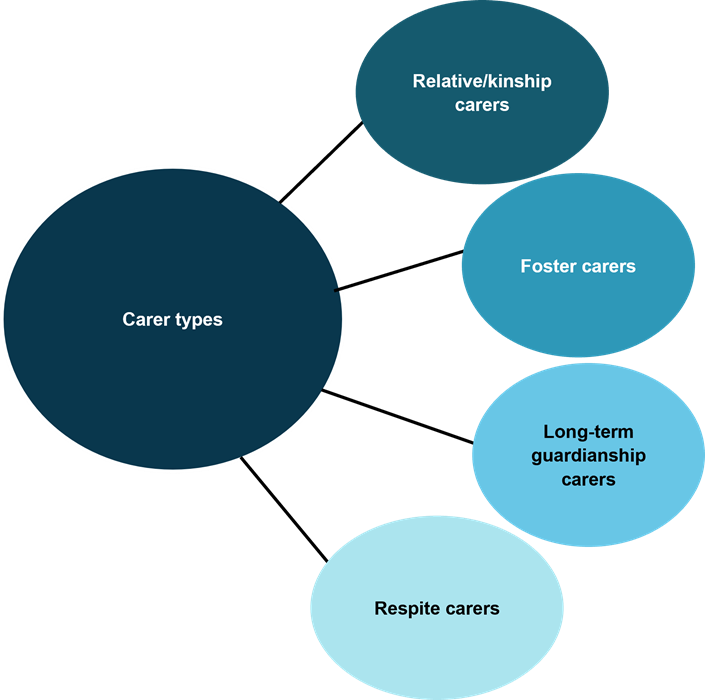Carers
Key findings
- There was a net decrease of about 205 foster carer households and a net increase of about 115 relative/kinship carer households in 2020–21 (excludes data for New South Wales).
- There were about 9,000 foster carer households with placements at 30 June 2021. Of these, over half (51%) had multiple children placed with them.
- There were about 15,600 relative/kinship carer households with placements at 30 June 2021. The majority (63%) of these households had only one child placed with them
Carers are people who have been screened and have received authorisation to provide placements in their private households for children in funded out-of-home care.
What types of carers are there?
In 2020–21, the vast majority (91%) of children in out-of-home care were placed in home-based care, primarily with foster carers or with relative/kinship carers (see Supplementary table S5.3). A smaller number of carers also provide other types of care, including respite and long-term guardianship care (see Figure 7.1 for an overview and Table 7.1 for further information).
Figure 7.1: Overview of carer types

Chart: AIHW.
| Carer type | When are children placed with these carers? | How long are children placed with these carers? |
|---|---|---|
| Relative/kinship carers | In situations where children are unable to live at home, but a relative, close family friend or member of the child's community is willing to care for the child. | Short- and long-term placements. |
| Foster carers | When children are unable to live at home or receive care from a relative. Foster carers are not related to the children they care for. | Short- and long-term placements. |
| Long-term guardianship carers | Children are placed with long-term guardianship carers (who may or may not be related to the child) when a care and protection order has transferred full parental responsibility to the carer. | Long-term placements, usually until the child turns 18. |
| Respite carers | When short-term accommodation is required for children where the intension is for the child to return to their prior residence (out-of-home care or family home). | Short-term placements, such as weekends or periods of a few weeks. |
Box 7.1 outlines data limitation for reporting on carers.
Box 7.1: Data limitations for carers
State and territory differences in policies and practices in relation to foster care and relative/kinship care should be taken into account when interpreting the data. Some notable differences include:
- degrees of reimbursement made to foster carers vary – for example, some carers are paid a wage beyond the reimbursement of expenses
- a carer who is authorised to provide both foster and relative/kinship care might be included in the count of both foster and relative/kinship carer
- in some jurisdictions, respite carers known to the department are registered as either ‘general foster carers’ or ‘relative carers’, so might be included in the scope of these collections. However, respite-only carers are excluded from the data.
While the majority of carer households are authorised to provide foster or relative/kinship care, a smaller number of carers also provide other types of care, including respite and long term guardianship care (see Box 7.2).
Box 7.2: Placements provided by all carer households at 30 June 2021
Expanding reporting to count the total number of unique carer households can give insight into the total number of children placed in the household, regardless of the placement type, as some carer households might be approved/authorised to provide more than one care type.
It also allows information about carer households that provide placements other than foster or relative/kinship care to be included in the count.
There were approximately 24,600 unique carer households with a placement at 30 June 2021. Of these, 58% had one child placed with them, 40% had 2–4 children placed and 2.1% had 5 or more children placed with them (Supplementary table S7.1).


